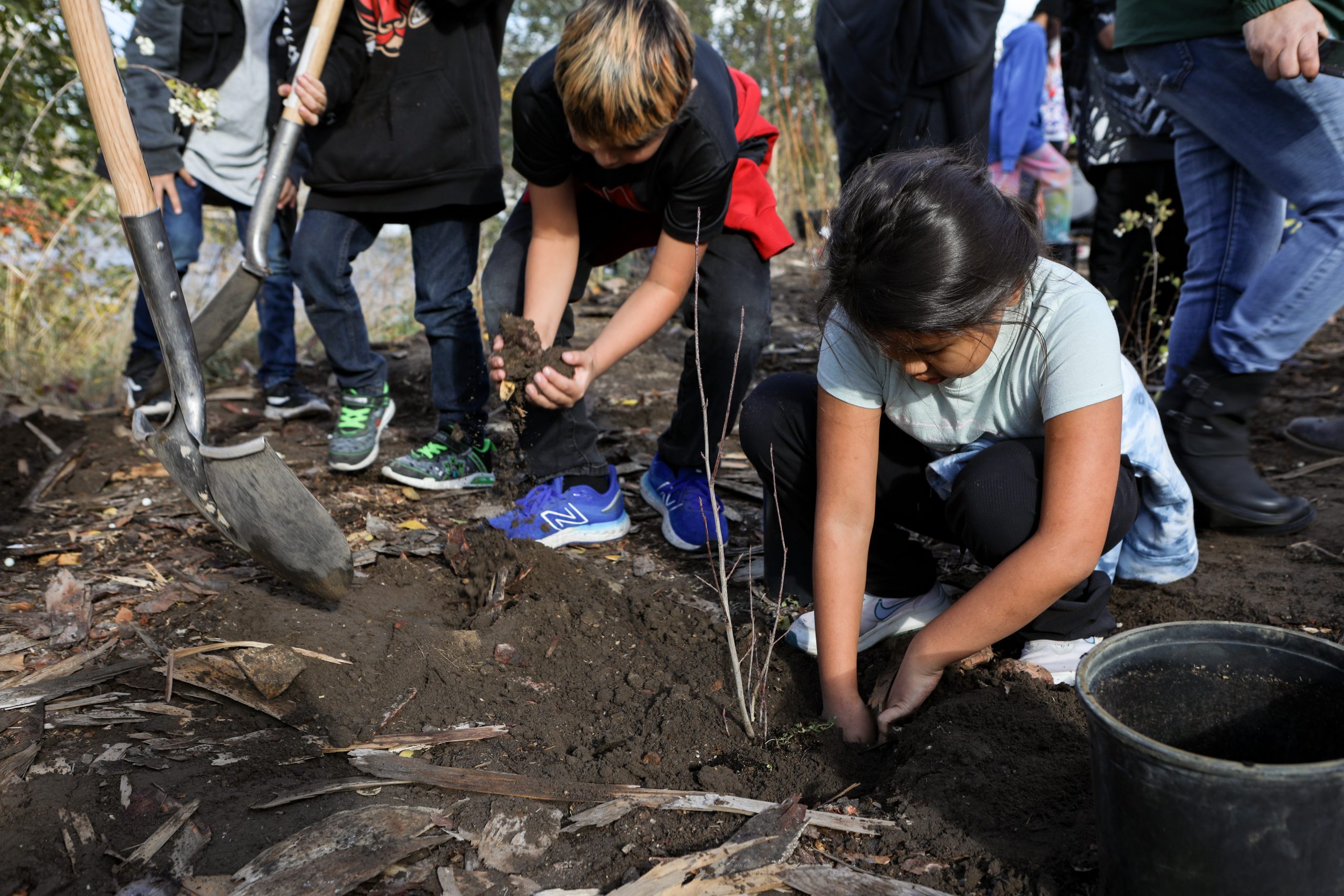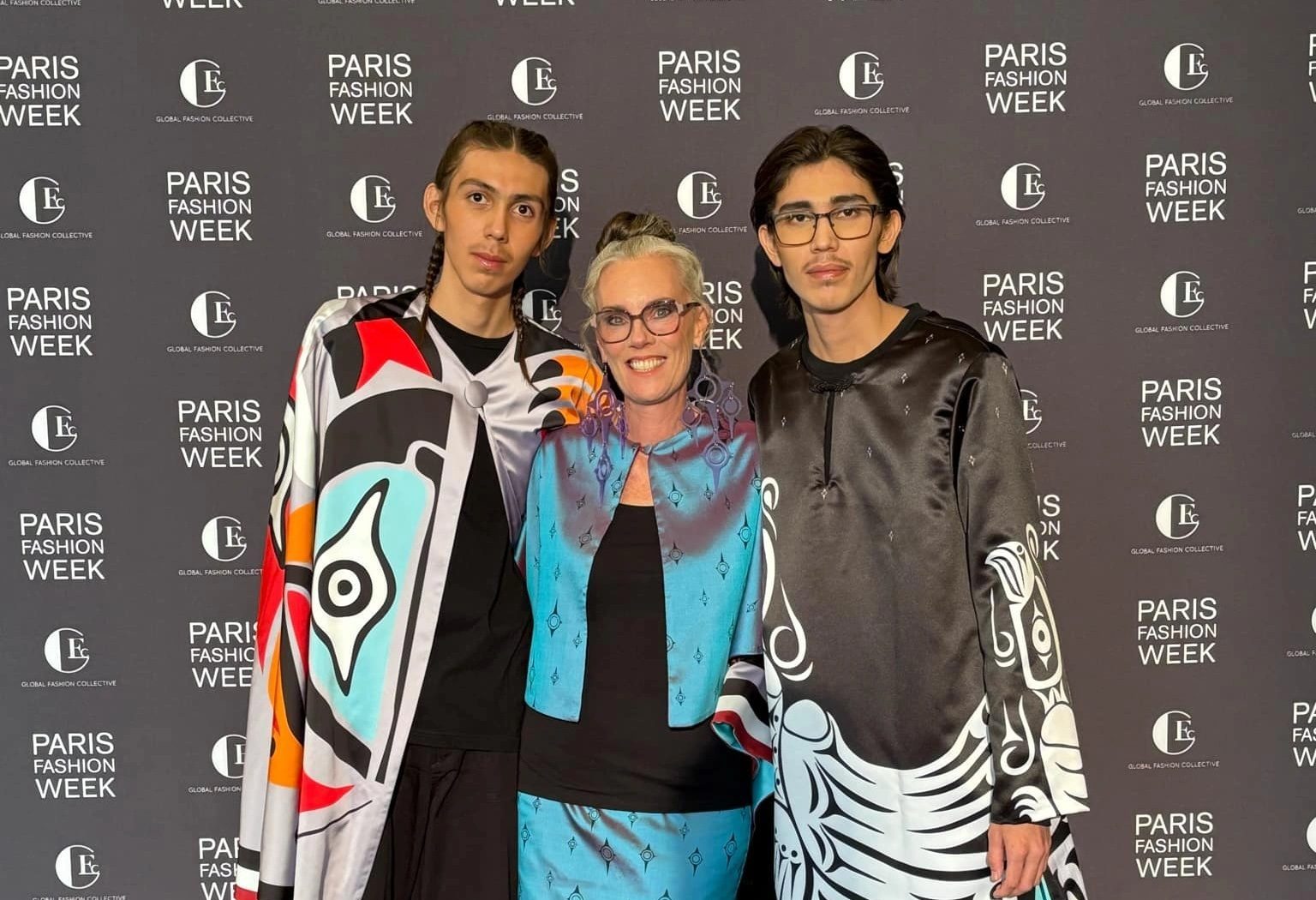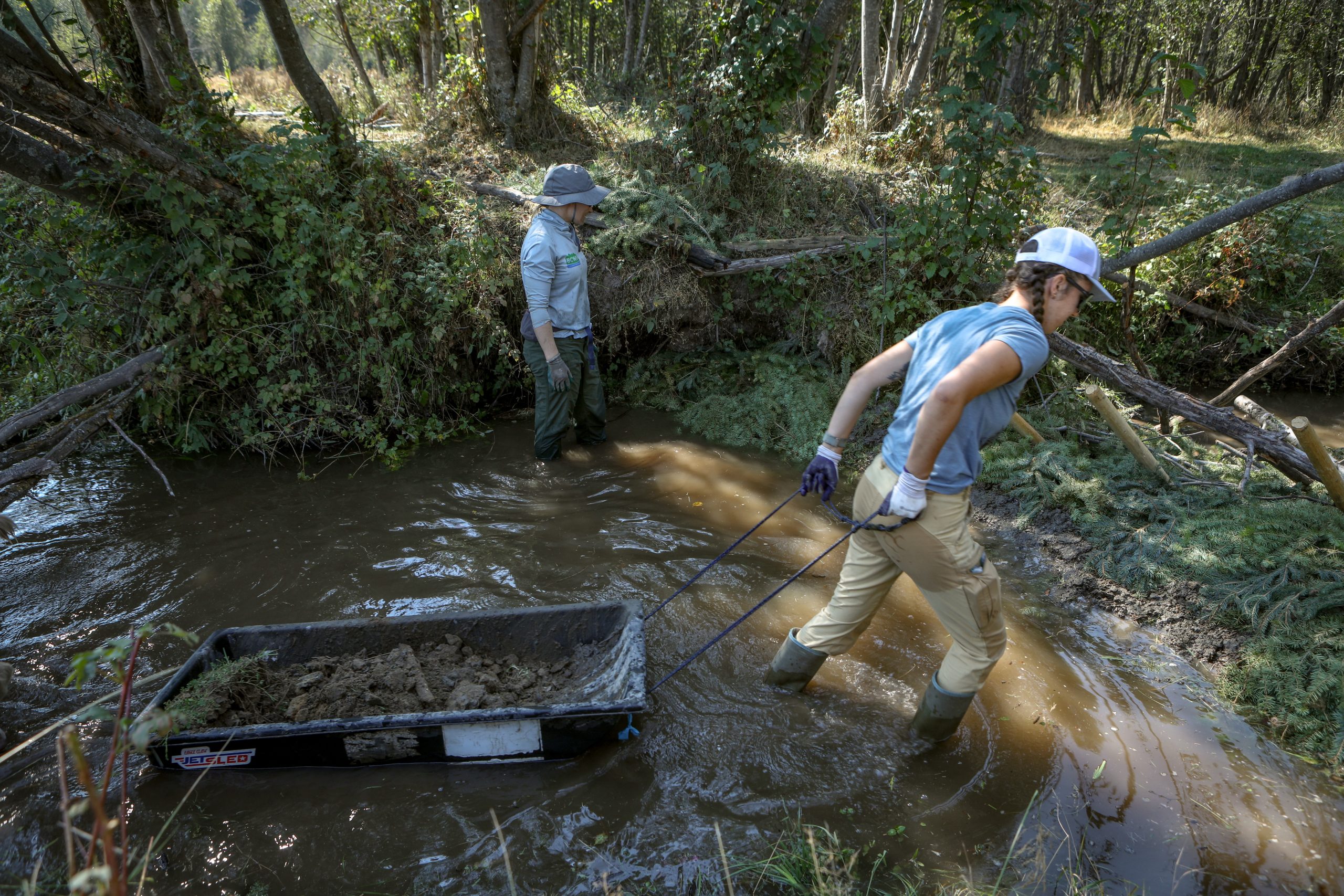Amidst the glaciers of Tlingit territories, women are ‘holding the embers’ of their language
‘When you’re able to bring the language back to a space where it hasn’t been spoken in a long time, it’s very humbling,’ says organizer of immersion trip
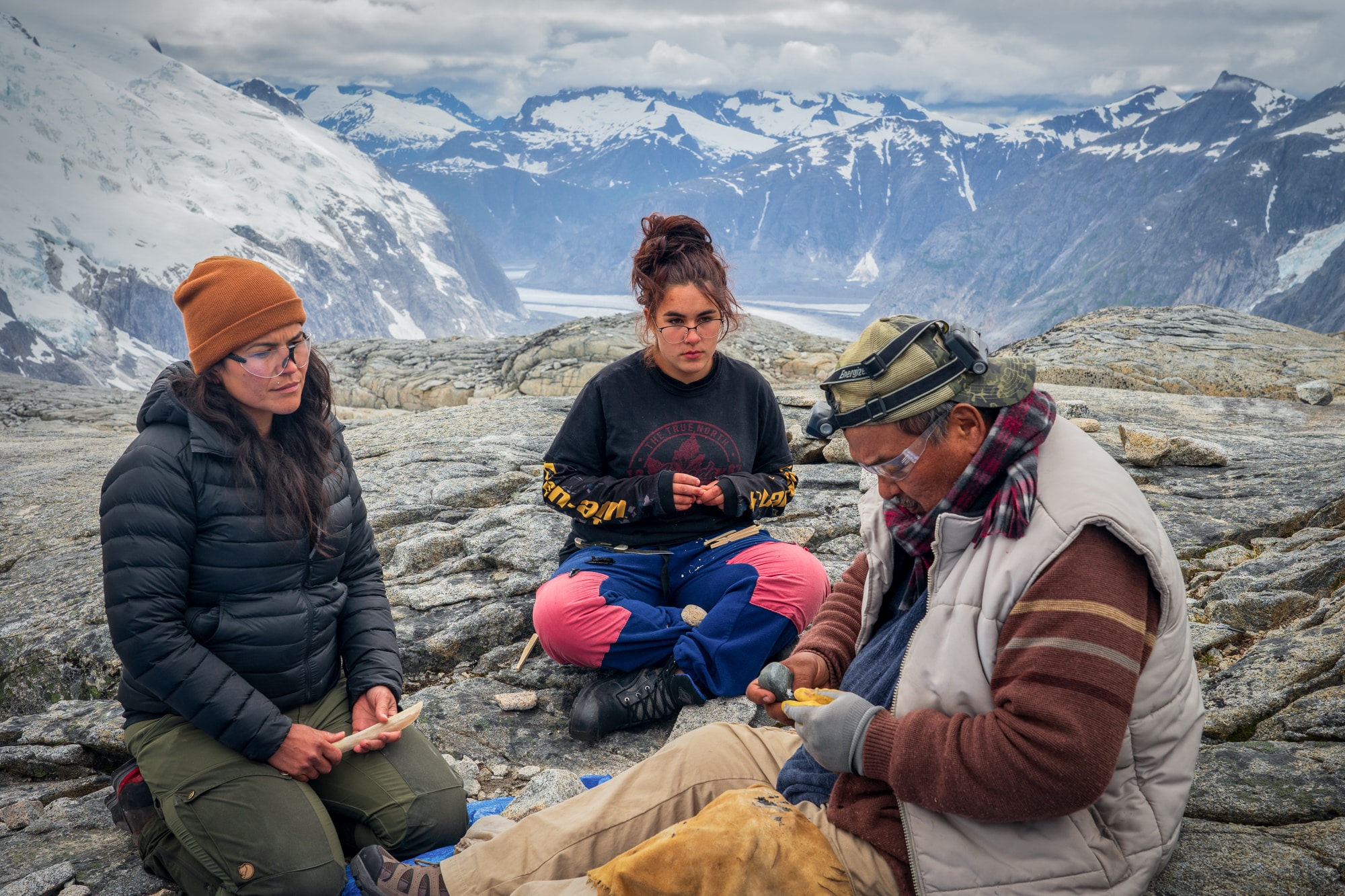
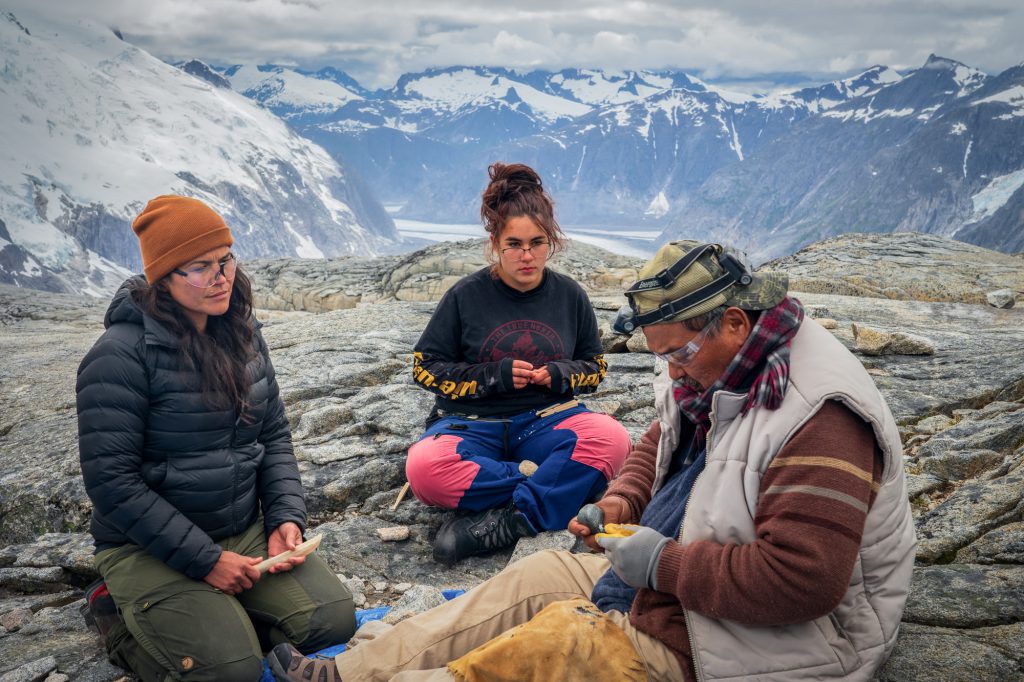
Surrounded by a snowy expanse and rugged peaks, a group of Tlingit women gathered on the Juneau Icefield to immerse themselves in their ancestral language, and deepen their connection with their culture.
Made up of more than a thousand glaciers along the border between “B.C.” and “Alaska,” the icefield was the site of a three-day Tlingit language immersion trip in July.
The excursion was the latest initiative by Tlingit women who are revitalizing their language using a new learning curriculum that’s spreading quickly through a number of Indigenous communities.
The Tlingit language is considered “critically endangered,” according to the Endangered Languages Project. The devastating language loss mirrors the rapidly dwindling glaciers that surrounded the group on the icefield, which are melting at an unprecedented rate.
“The loss and the absence of our language is echoing,” said K’èdukà Jack, a lead organizer of the glacier trip, which took place where the Vaughn Lewis and Gilkey glaciers meet.
“So, when you’re able to bring the language back to a space where it hasn’t been spoken in a long time, it’s very humbling.”
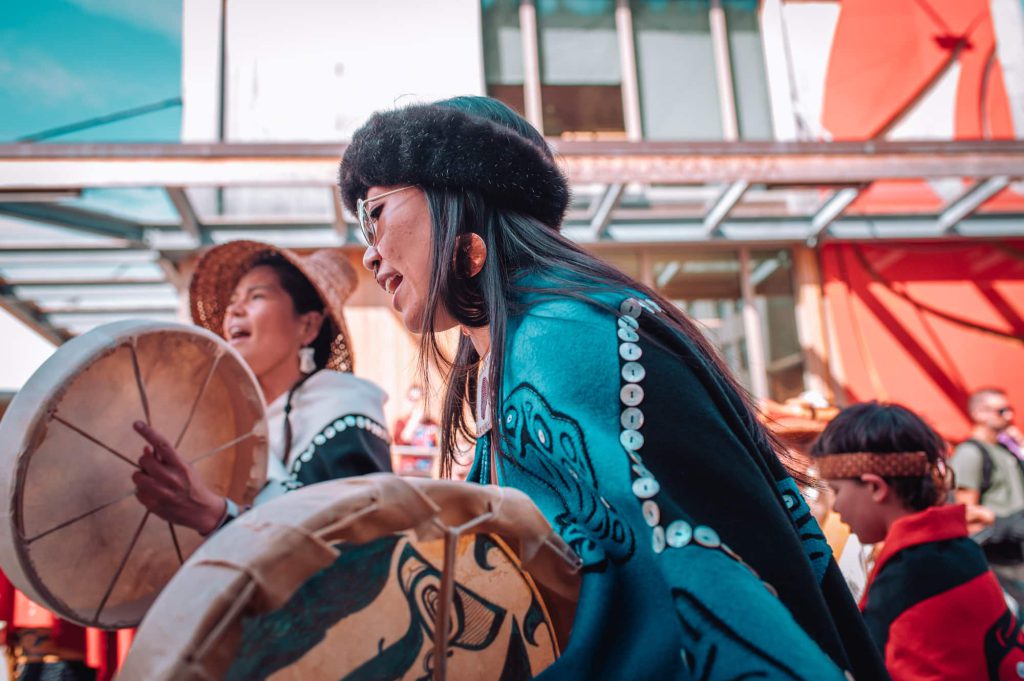
A glacial pace to revitalize Tlingit
The Children Of The Taku Society (COTTS), a non-profit spearheading the Tlingit language revitalization program since 2017, co-hosted the language-learning trip with the Juneau Icefield Research Project.
K’èdukà, COTTS executive director, explained that the organization is part of a broader movement for Tlingit language revitalization led by people from numerous Tlingit communities.
The glacier trip was the longest students in the COTTS program have spent “in a full immersion” with their language, said the organization’s assistant curriculum director, Daas.oox̱ Kirby.
“We broke our previous record of 48 hours,” she said, after joining the excursion.
The threat to Tlingit and other Indigenous languages can be traced to colonial policies by governments in both “Canada” and the “U.S.” — such as residential “schools,” where Indigenous children were punished, often violently, for speaking their languages.
“So much has been taken away from us, “ said Neilatóo.atsien Allan, executive co-ordinator at COTTS. “And this is one way we’re taking a little piece of that back.”
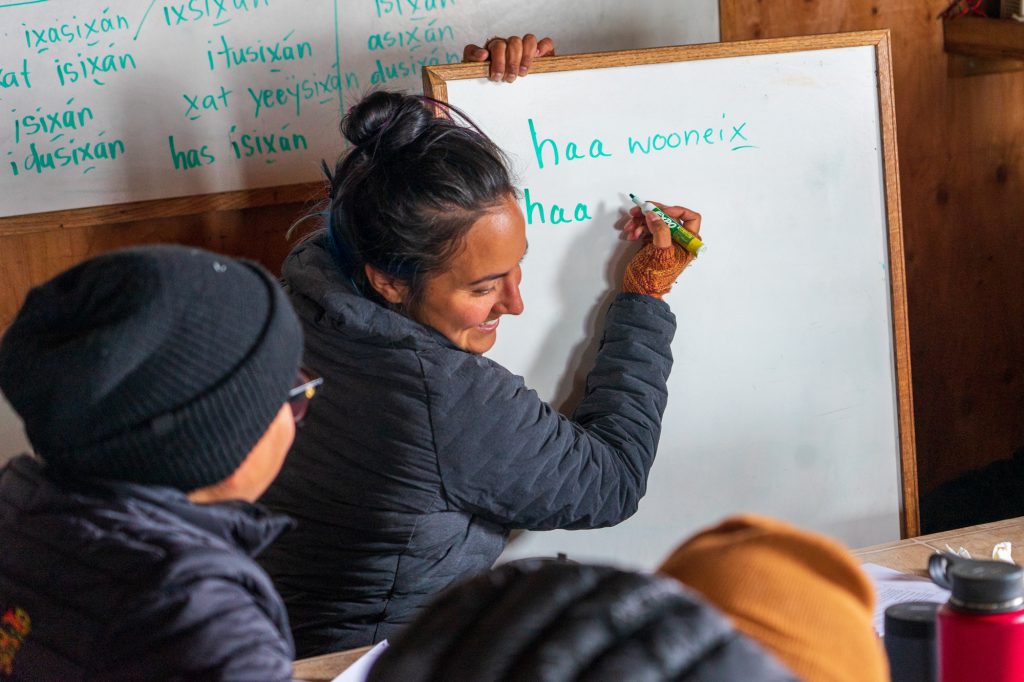
But to date, Tlingit language revitalization efforts have been moving at a glacial pace.
“We’ve been working on language revitalization in my community for a good 35 years now,” said Neilatóo.atsien. “And from that time, when I was a young child, we haven’t created one fluent speaker in our community.
“We’ve just continuously lost the speakers that we have.”
Daas.oox̱ described the situation as bleak.
“It’s pretty dire if I’m being honest,” she said. “I try not to think too much about what we’re up against.”
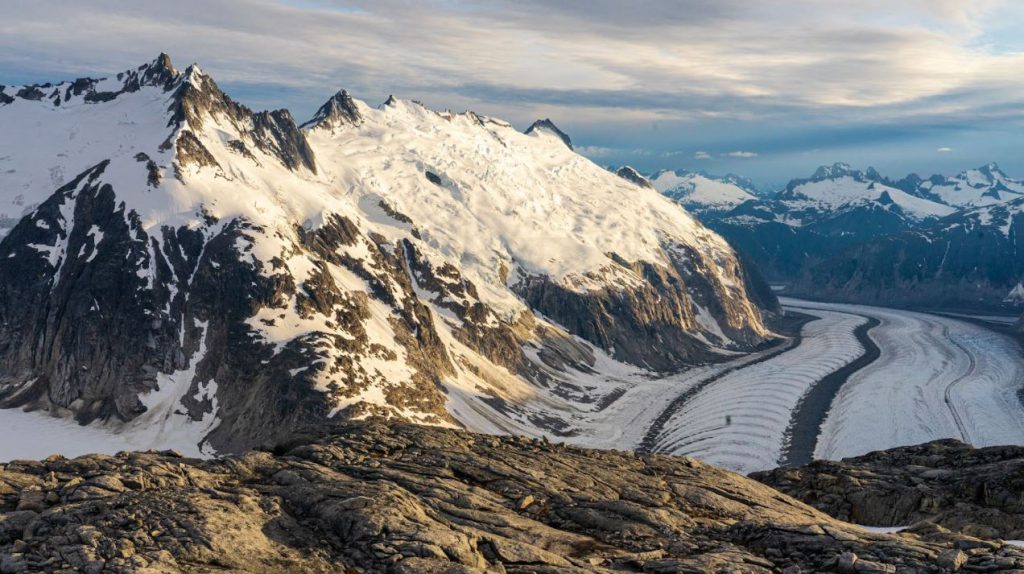
Glaciers a symbol for overcoming challenges
It can be hard not to feel small being up against a colossal task like reviving an endangered language and, in that sense, holding an immersion trip on a glacier was fitting.
“The glacier was one of those places that makes you feel very small and insignificant,” said Neilatóo.atsien. But glaciers have also been a symbol for overcoming challenges, she added.
“Glaciers come up in our stories often, usually in our migration stories. There are stories of Tlingit people going over, under, and around glaciers at these important, challenging, life-changing points in time.”
When it comes to revitalizing Tlingit language, the group doesn’t have a shortage of obstacles, or of life-changing experiences.
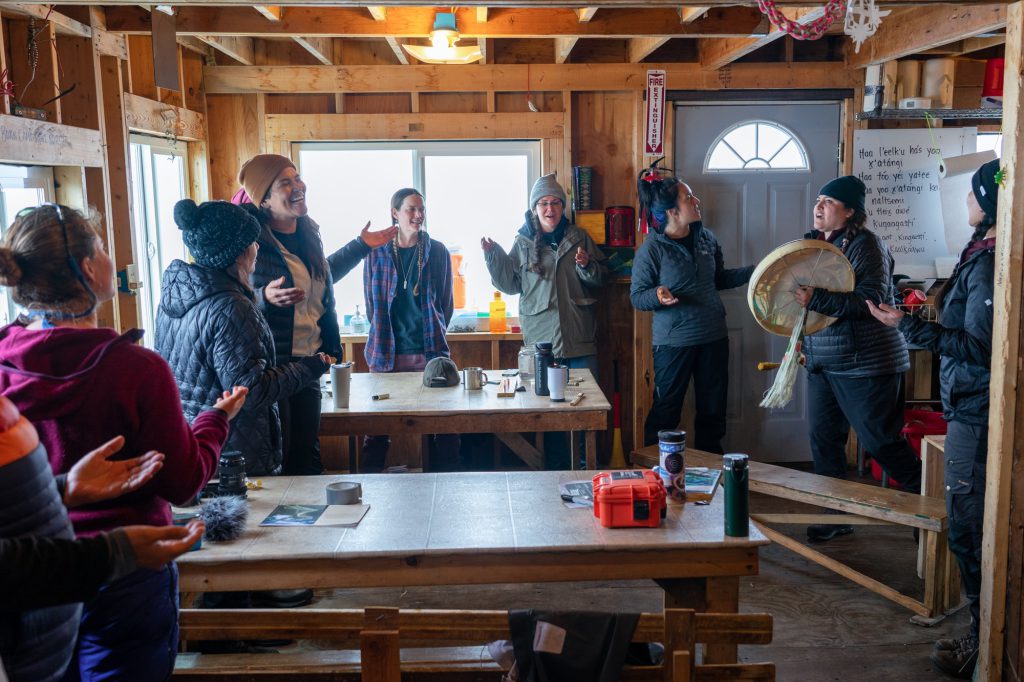
“The biggest obstacle we have right now is figuring out what we’ve been doing to date that hasn’t worked,” said Neilatóo.atsien, who left her stable 12-year career to dedicate her time to COTTS’s language revitalization work.
“It can be a bit of a hamster wheel,” said K’èdukà, referring to language revitalization efforts. “People just don’t have that clear understanding of what is going to revive a language that is at this level of disruption.”
K’èdukà found herself spinning her own proverbial hamster wheel when she returned to her Tlingit homelands after a trip abroad, resolved to learn her language.
“I knew that I was going to go out and learn the language so that I could teach it to my children,” she said. “But I couldn’t find a way to do it.
“There was no clear path.”
Fortunately, K’èdukà came across a resource that changed everything.

‘This is magic’
The Paul Creek language methodology, developed by Chris Parkin and LaRae Wiley at the Salish School of Spokane, was designed precisely to be replicated and adapted into any Indigenous language.
Another superpower of the curriculum is its ability to produce language teachers quickly.
“The curriculum helps each student be a learner and a teacher at the same time,” said K’èdukà, comparing it to other language learning models that require years of study to become a qualified instructor.
“Anyone can pick it up and learn and teach others,” she said. “You can teach lessons you’ve never learned before, which is important in a world where we have so few speakers.”
Once she got a hold of the curriculum, she put a call out to the Tlingit community to see if anyone else was interested in learning the language.

Ḵudeishéex̱ Esquiro, who now serves as the community co-ordinator at COTTS, was part of the cohort who signed up for a teacher’s training course K’èdukà hosted in 2019. Neilatóo.atsien was there, too.
“By the end of that training, I taught my first immersion lesson for an hour-and-a-half with no English,” said Ḵudeishéex̱. “Before that time, I had zero Tlingit language.
“I was hooked. I thought, ‘This is magic.’”
At the end of the four-day language course, K’èdukà asked the group if anyone would like to teach the next program.
Ḵudeishéex̱ put up her hand. The following month — just five days after she gave birth — she was already teaching the course.
“I got to bring my baby to class once a week for a full day of a Tlingit immersion,” she said. “I’ve been teaching consistently ever since.”
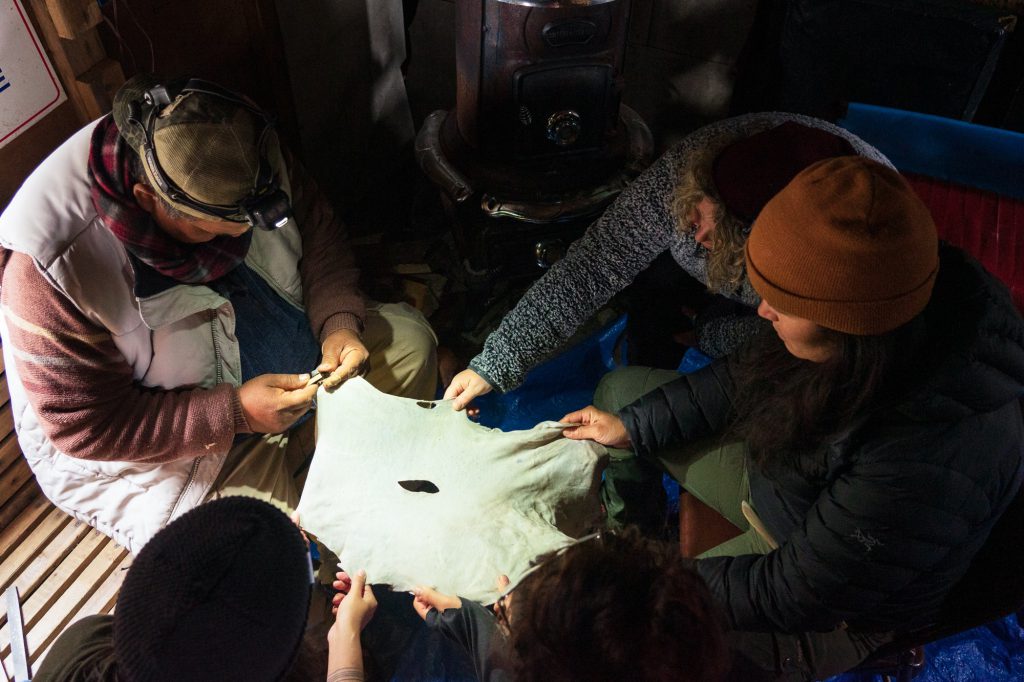
‘A moccasin made differently’
During the glacier trip in July, Ḵudeishéex̱ was reminded of a story her grandma would tell about their ancestors’ past.
“Our people lived on a little rock island, and there was just ice all around,” she recounted. “They thought they were the only people left in the world.”
That changed when some children were playing down by the shore, she recounted. As they were breaking the ice to get to the water underneath, a moccasin appeared from under it.
“The moccasin was made differently than our people made it on their island,” said Ḵudeishéex̱. “And it was the first time they realized that there were other people out there.
“So they started sending people out over the ice, and they found all these other rock islands that people were existing on.”
Similar to the moccasin, the Paul Creek curriculum that came to K’èdukà continues to unite the many islands of language seekers across “B.C.”
The COTTS team has carried on the Salish School of Spokane’s legacy of sharing it with whoever needs it, hosting individuals from a number of other nations during their teacher-training sessions so far. The curriculum’s ability to be used for other languages makes the knowledge transfer easy.
As of last August, 19 Indigenous language communities were using the curriculum.
“It’s always been a part of what we do, that we share these teachings freely and that we support other nations to do the work that we’re doing,” said K’èdukà, likening the work of revitalizing language to carrying a torch.
“They are holding the embers that are going to become the guiding light for their people for generations to come.”
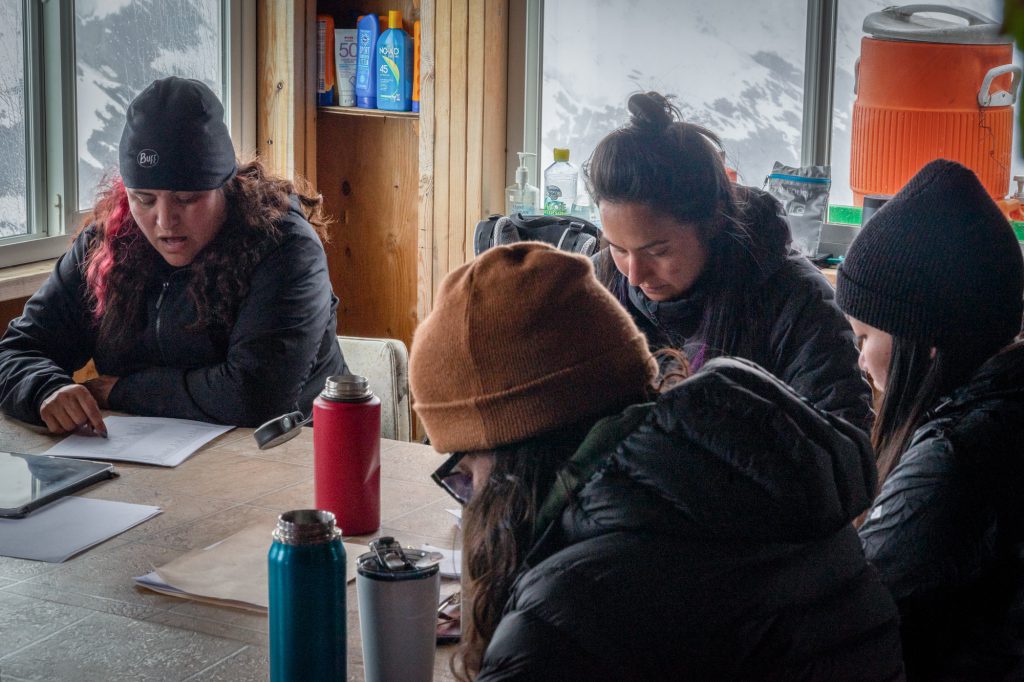
‘This curriculum is so healing’
Another aspect of the curriculum that makes it so effective, K’èdukà explained, is that it helps students learn much like babies do.
That’s in contrast to other learning methods in which learners sit in classrooms, reading and writing a language, while discussing it in English.
“There are very few adult language programs that have found the strength to break out of that box,” she said.
Instead, the Paul Creek curriculum helps learners “live and truly exist within the language from day one,” K’èdukà said.
Learning a language in a similar way to how children do also helps create a safe space for learning, added Daas.oox̱, who felt anxious trying to speak Tlingit before taking the course — afraid she might make a mistake.
The curriculum offered more ease and confidence speaking, however, “which is why this curriculum is so healing.”

Neilatóo.atsien emphasized the importance of celebrating whatever students say in a language as they learn — and make mistakes.
“It’s always a win when they try,” she said. “No two-year-old just starts speaking perfect English.”
That is especially important for people who have experienced language trauma, she added.
“You’re educating a community that’s been traumatized in so many ways,” she explained, “traumatized by the harsh corrections, the shame around not speaking properly, the shame of not knowing their language, and then the trauma of residential school — having family members whose language has been violently taken away from them.”
Neilatóo.atsien’s grandmother was forced to attend a residential “school” hundreds of kilometres from her family — and prevented from returning for eight years.
“When she came back, she didn’t speak the language,” she recounted. “So my mom wasn’t raised in the language at home.”
Her mother was later sent to one of the institutions, too, Neilatóo.atsien said, “So there was absolutely no speaking the language.”
‘Massive cuts’
In 2015, the Truth and Reconciliation Commission determined that residential “schools” were a deliberate, government-sponsored effort to eradicate Indigenous cultures and languages — and that their aim to assimilate Indigenous peoples was “cultural genocide.”
In its calls to action, the commission warned of an “urgency to preserve” Indigenous languages.
“The federal government has a responsibility to provide sufficient funds for Aboriginal-language revitalization and preservation,” the commission concluded.
But just nine years after the TRC’s call to action, government funding streams for COTTS’ language program started drying up.
“We faced massive, massive cuts this year,” said Daas.oox̱. “We received about a seventh of what we were supposed to.”
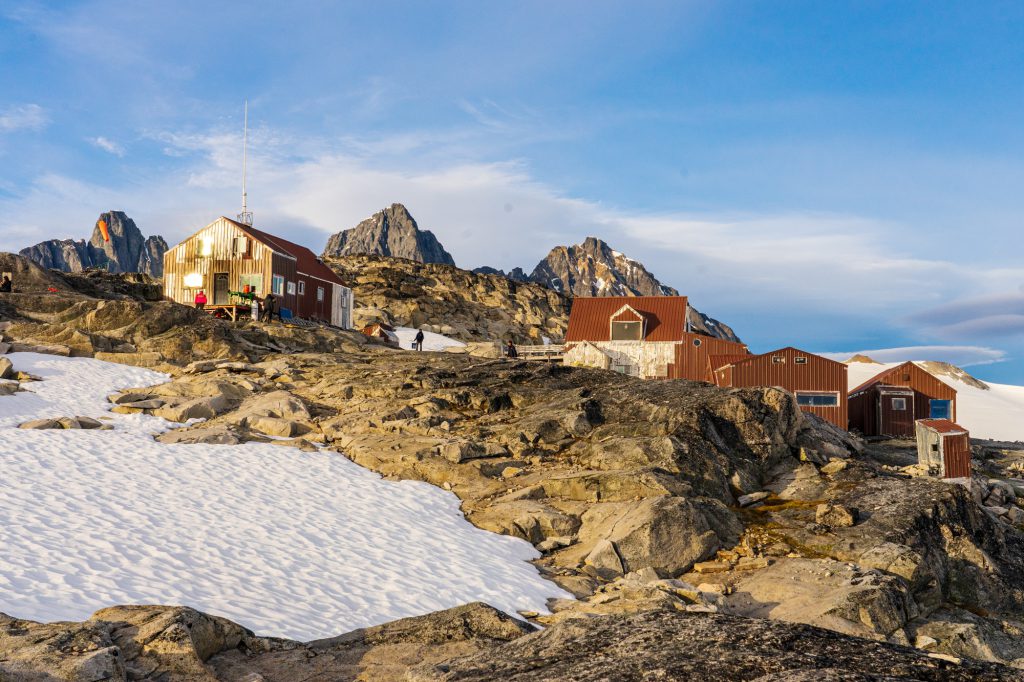
Neilatóo.atsien believes the budget cuts are related to the upcoming federal election, which could be announced anytime before October next year.
“The federal government is trying to tighten all the purse strings,” she said, adding the cuts have taken a toll on the COTTS team.
“We all took a cut in our hours,” Neilatóo.atsien said. “But it really doesn’t change the workload. We’re just being paid for a lower amount of hours — and we’re all on the verge of burnout.”
Despite the cuts, the team is pressing on to finish their six language textbooks, which are about halfway complete.
“I’m hoping in the next five years, we’ll be done creating all the textbooks,” Daas.oox̱ said. “And then I would love to see every Tlingit nation adopt the curriculum as an ongoing, year-round class.
“And we can start busting out language speakers. Once the curriculum is done, it’ll be rapid.”
With this large task ahead — and burnout pervasive — the glacier trip was a reprieve, and a reminder of what the group is working toward.
“Being on the glacier was just so healing,” Ḵudeishéex̱ said. “The connection with everybody, and the connection with my ancestors, being on the land and speaking in the language — it was just what my spirit needed.”
Reporting for this story was made possible in part through a grant from the Institute for Journalism and Natural Resources and the Gordon and Betty Moore Foundation.
Author
Latest Stories
-
‘Bring her home’: How Buffalo Woman was identified as Ashlee Shingoose
The Anishininew mother as been missing since 2022 — now, her family is one step closer to bringing her home as the Province of Manitoba vows to search for her
-
‘Our lives are documented in the art’: Snuneymuxw design house weaves love and loss into new collection
Ay Lelum debuted its latest ‘Bright Stars’ collection in Paris on Oct. 2, with designs that record family history through clothing



